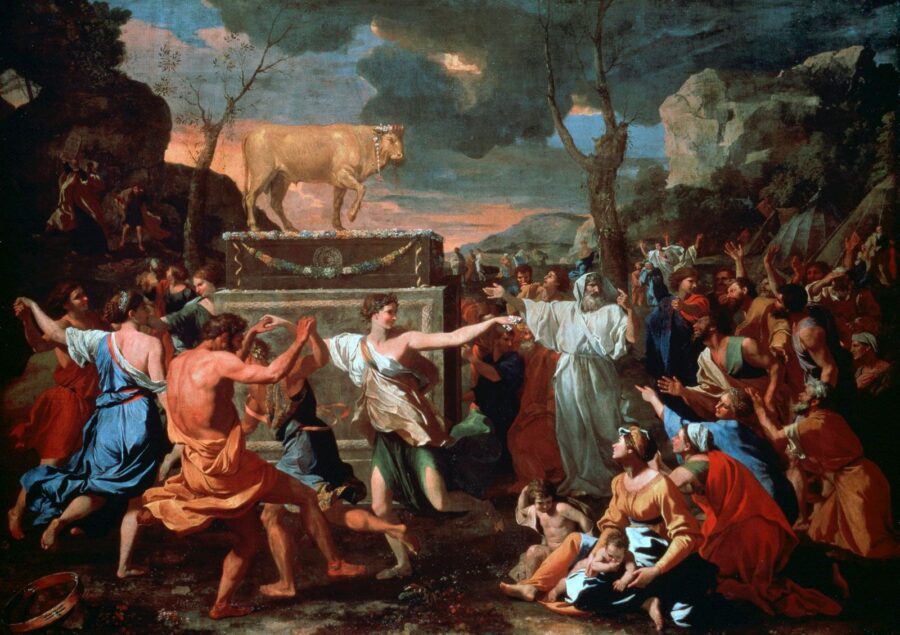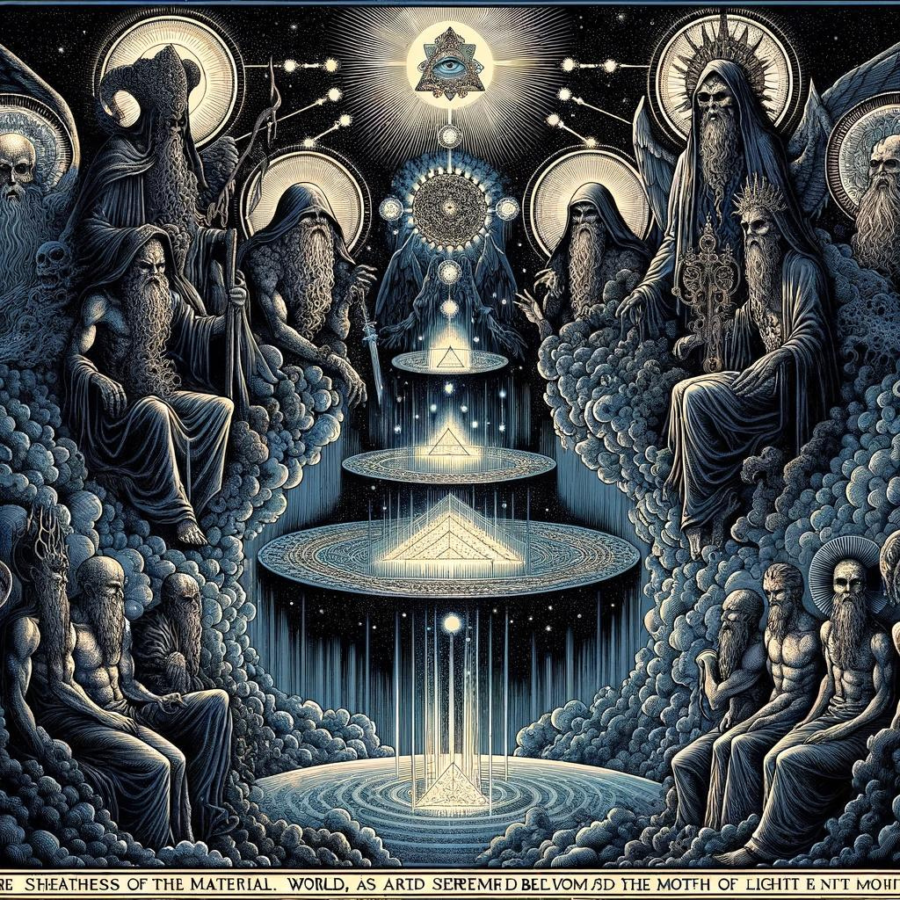One of the religious practices the Bible most commonly condemns is that of idol worship. From Genesis all the way to the letters of Paul in the New Testament, idolatry is again and again either forbidden or described as a foolish and spiritually destructive practice. The reasons for these warnings are sometimes contradictory. For example, while the Apostle Paul warns that demons inhabit idols, other writings in the Old Testament and Apocrypha say that idols are nothing more than wood and metal and ultimately powerless.
Because idolatry has been largely wiped out in majority Christian and Islamic lands, modern Abrahamists tend to abstract its meaning and implications for their audiences. Idolatry these days is about not worshipping things like wealth, beauty, or whatever else in the material world might pull their attention away from ascribing all ultimacy to the Most High God.
They’re not entirely wrong in this message. Even for the Diabolist, what is good at an appropriate amount (e.g., sex, money, public prestige) can become a poison if it distracts the practitioner from embodying their higher Law. The trick is that what is an appropriate amount differs from individual to individual. The golden mean is a good guide when you are first starting out, but all of us have some pursuits in which we are called to go to extremes.
The creative reimagining aside, idolatry proper is a powerful tool in the Diabolist’s kit that should not be overlooked. Something preternatural in the human psyche responds deeply to physical icons of the divine. There is a reason that ancient Hebrews commonly ignored the junction to avoid the practice, and that the Church was so quick to handwave away clear commandments against it. Even non-practitioners are often so moved by depictions of the Buddha they litter their houses with statues of Gutama, Amitabha, and Kwan Yin.
Contrary to Cartesian philosophy, the soul and the body are not separate, but intimately linked. Spirit needs a material vehicle to manifest fully, which is why magickal rites that utilize tangible conduits through which the powers invoked may work (talismans, herbs, crystals, magickal weapons, incense smoke, etc.) are generally more effective than ritual work that occurs only within the mind. Idols of the Lord and Lady fulfill this same function for the Diabolist’s daily rites of worship. They provide a vehicle in which the spirit of S and L reside and appear to us. Perhaps even more importantly, they are a focal point to keep the practitioner’s attention and to which they may direct their entreaties. An idol is a portal which connects the Otherworld and our own.
Today’s Diabolists have an embarrassment of riches when it comes to the amount of idols that are available for commercial purchase. Previous generations had to rely almost entirely on their own artistic ability and know how when it came to procuring a statue or painting for their altar. Now, multiple choices are just an Etsy search away.
There is no hard and fast rule regarding what material an idol should be made of or what style of artwork it depicts. The question primarily to ask is, which calls out the most to you? For some this will be a statue. For other a painting or print. You can even go more abstract, choosing to use a candle, crystal, or sigil for the focal point of worship. This option is particularly useful for people who, for whatever reason, need to keep their Diabolism a secret.
Once you have the idol, you’re ready to consecrate it. There are two methods of going about this. One is to pray an invocation to the deity every time you wish to interact with it. This is the method Wiccans tend to use in group ritual, as the High Priest and Priestess typically serve as living idols of the Horned God and Triple Goddess. At least for very specific portions of group ritual.
You can use this same method in your own daily rites, asking Satan and/or Lilith to, “please, indwell this image which has been carved into your image, so that we may speak and commune with one another” or some other such verbiage.
The second method is to ritually call a spark of the Lord and Lady to permanently reside in the idol. This requires a more thorough ritual than a short, one sentence prayer.
First, give an invocation, praying that the deity in question will be with you in your chapel. Next, sprinkle the idol with water. If you already use The Book of Infernal Prayer, you can use the same water and a version of the prayer from the opening sequence of our daily prayers. “Cleanse this image, Lilith, so that you maybe worshiped in purity.” Anoint the idol with holy oil. Since we are consecrating an idol of Lilith in our example, we will pray to her, “Consecrate this idol, Dark Mother, so that it will ever be yours.”
At this point, you should empower the idol with the powers of the four elements. I have a particular way I instruct members of the Brethren to do this, but a simpler yet just as effective way would be to hold the idol to the north, pointing at it with the sword and saying, “May this sacred image be imbued with the power of Earth, so that it may be a temple for my Lady.”
Hold the idol to the west, pointing at it with the sword and saying, “May this sacred image be imbued with the power of Water, so that my Lady’s love may flow through it.”
Hold the idol to the south, pointing at it with the sword and saying, “May this sacred image be imbued with the power of Fire, so that my Lady’s strength may radiate from it.”
Hold the idol to the east, pointing to it with the sword and saying, “May this sacred image be imbued with the power of Air, so that my Lady’s wisdom ring from it.”
In order to make the above more powerful, visualize the powers of the elements coming from their respective origins and infusing the idol with power. Return to the altar in the north. Continue to hold the sword over the idol and pray that Lilith bless you by depositing a spark of her divinity within it. Feel free to utilize any of the prayers in our book, or anyone else’s for that matter, as a basis to accomplish this. I created the following by revising one of the prayers from the Egyptian Book of the Dead.
A body I present to you, Lilith
Eyes and hands, a heart and tongue
Make of this image a dwelling place,
My divine goddess.
Make of this image a temple
Open your eyes, my Lady
Assume control of these hands
Open your heart, Babylon
Let nectar drip onto me from your tongue
Say this prayer three time, rising in pitch and speed with each cycle. Feel the goddesses’ spirit inhabiting the vessel you have presented her. When finished, present gifts to newly empowered holy object. Fruit, alcohol, incense, sacred oil, poetry, all of these are acceptable offerings. Close with a prayer of thanks and praise.
Once the idol is empowered all that is left to do is to maintain it. This is first and foremost done through daily offerings of prayer directed to the idol, though physical offerings can be added to this as well. If you go more than a couple of weeks without making some form of offering, you will need reperform the empowerment ritual. You should also regularly clean the idol. It is your Lord and/or Lady’s house now, it should be treated as the holy object it is.


